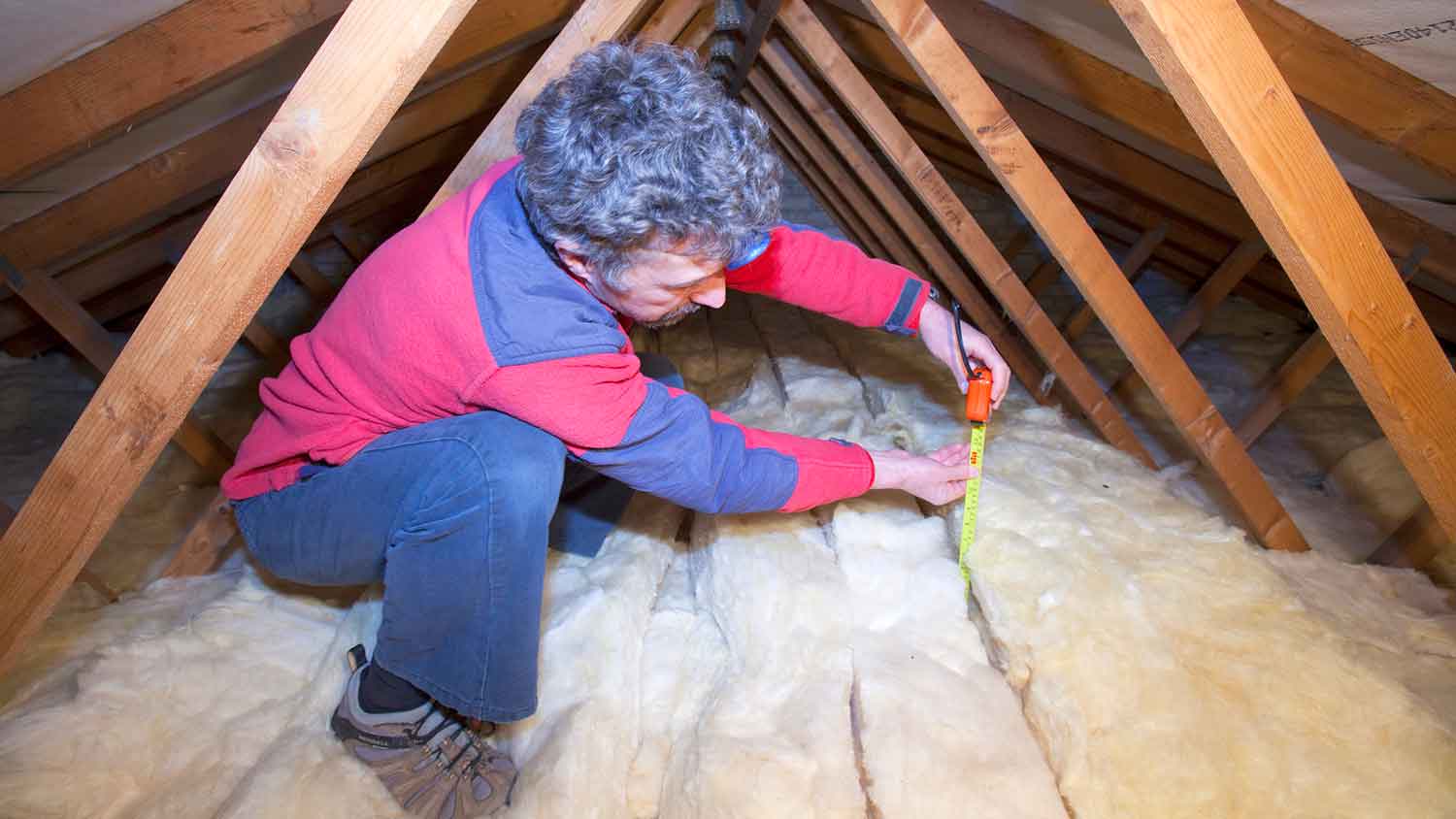
Trying to calculate how much spray foam insulation costs? Our in-depth guide breaks down pricing by type, amount, and where you install it.


Use square footage to calculate how much insulation to buy.
R-value needs vary by climate zone and project area (attic, floor, etc.).
Choose between batts, blown-in, or rigid board insulation.
Attic upgrades often require topping off existing insulation.
Hire a pro for large or complex installations, especially blown-in insulation.
Upgrading or installing insulation improves the energy efficiency of your home and makes your space more comfortable. If you're asking yourself, "how much insulation do I need?," the answer depends on the size of your space, the type of insulation you choose, and the climate in your area. Use this calculator for insulation to get an accurate idea of how much to buy.
Before measuring your space, calculate the R-value of the insulation you'll need. R-value stands for “resistance value,” and it measures how well insulation resists heat flow. The higher the number, the better the insulating power. Use the chart below to guide your project:
| Climate Zone | Description | Areas of the U.S. (examples) | R-Value Attic | R-Value Floor |
|---|---|---|---|---|
| 1 | Very hot and humid | Southern Florida, Hawaii | R30-49 | R13 |
| 2 | Hot (humid or dry) | Mid-Florida, Southern Louisiana | R49 | R13 |
| 3 | Warm (humid or dry) | West Texas, Coastal California | R49-60 | R19 |
| 4 | Mixed (humid or dry) | Kentucky, Coastal Oregon, Washington, D.C. | R60 | R19 |
| 5 | Cool humid, cold and dry | Upper Midwest, Lower Northeast | R60 | R30 |
| 6 | Cold humid, cold dry | Upper Midwest, Upper Southwest | R60 | R30 |
| 7 | Very cold | Northernmost Maine | R60 | R38 |
| 8 | Subarctic | North Alaska | R60 | R38 |
To calculate the square footage of the insulation you need, simply multiply the length or height of the space by the width:
Square footage of insulation = Height (or length) x Width
Apply this formula to each area you're insulating—walls, floors, or ceilings—and add about 10% extra for waste or miscuts.

While you need to consider the square footage of the space regardless of where you are installing insulation, certain areas of your home require additional measurements.
When measuring your attic, you need to account for whether it's already insulated or not. You'll need to measure the depth of the current insulation to determine the current R-value, then calculate how much additional insulation to add reach to the desired R-value.
For example, if your attic currently has about 5 inches of insulation in the joists, it has an R-value of about 15. To achieve an R-value of 49, you'll need to look for additional insulation with an R-value of at least 34.
When measuring to install wall insulation, calculate the width and height of the wall space, then subtract the square footage of any openings, such as the doors or windows in the room.
While you can install insulation on your own, hiring an insulation contractor can help ensure that you get the appropriate type and amount of insulation for your home's needs and that the insulation is installed correctly.
Certain types of insulation, such as blown-in insulation, require special equipment during the installation process, making it easier to work with a professional than to attempt a DIY project.
From average costs to expert advice, get all the answers you need to get your job done.

Trying to calculate how much spray foam insulation costs? Our in-depth guide breaks down pricing by type, amount, and where you install it.

Crawl space insulation costs vary by size, insulation type, and material. Read this guide to learn how much your crawl space insulation could cost.

Learn the key factors that influence the cost of renting a blown-in insulation machine.

What is a radiant barrier? This reflective building material is designed to reduce heat transfer and save you money on energy costs.

How does a radiant barrier work? This alternative insulation is effective at cooling a home, but its unique mechanism won’t provide the same heating benefits.

How much does insulation save on energy bills? It depends on where you live and the type of insulation you install.